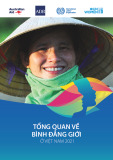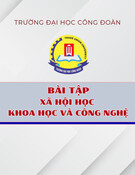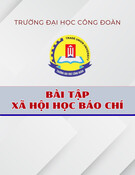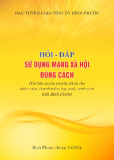
South Korean unmarried single women's images in the 2000s through major South Korean newspapersNguyen Thi Hanh DungHong Bang Internaonal University, VietnamABSTRACTSouth Korean women's images mostly connect with the ideal women's images of “good wives, wise mothers”. However, the number of single women in South Korea populaon has been increasing significantly in recent years. Various media outlets such as television and newspapers have been menoning and discussing the lifestyles and mindsets of Korean single women, oen using hot keywords such as "Gold Miss", "unmarried single women (Bihon)", and "single women (Mihon)" in both posive and negave contexts. This study aims to explore the most popular and representave characteriscs of South Korean single women and figure out the transion of single women's images in the 2000s since the Asian financial crisis in South Korea. Based on literature reviews and newspaper reference sources, this research also aims to find out what people think about the most popular images of South Korean single women nowadays, then summarizes the similaries and differences in the popular images of South Korean unmarried single women described by Korean newspapers's discourse and exisng literature reviews.Keywords: South Korean Unmarried Women, Korean Single Women's images, Bihon Women, Mihon Women, Korean Unmarried Women's images “In general, Korean women follow a standard life trajectory. Aer compleng their educaon, they enter the labor market. They quit their job and become full-me homemakers in marriage and childbearing, while their husband provides the economic resources to the household. They may resume work when their children need less of their concern, but the jobs they get are usually temporary. Others do not return to the labor market at all.” [1]. However, the Asian financial crisis in 1997 created a noceable change in South Korean women's lifestyles, mindsets, and behaviors. To deal with the financial challenges, women became more acve in entering the workplace as breadwinners. As a result, they also have to struggle with three opons for their future lives: staying single to pursue their professional careers and job promoon, becoming perfect working mothers or giving up their jobs to become “good wives, good mothers” aer childbirth. In recent years, especially during the past 15 years, South Korea has had a big rate of single women increase in populaon. Media, televisions, and newspapers usually menon about single women, their lifestyle, mindset, etc in various issues and hot keywords in both posive and negave views such as “Gold Miss” (골드미스), “unmarried single women (Bihon – 비혼)”, “single women (Mihon – 미혼)”. We also can see those changes clearly through the stascal reports. According to Stascs Korea, in 2015, there were around 1.4 million single women in the ages of 30-40, increasing more than twice from 2005 to 2015, single women households also accounted for 50.2% of all single-person households in South Korea [2].Most research on women's images in South Korea usually focused on the ideal women's images of “good wives, wise mothers” between the 1970s, 1980s, and 1990s. The recent research from the 2000s onward almost focused on analyzing the single women's images through Korean dramas or commercial films but those researches usually analyzed a few dramas or compared South Korean dramas with other countries' dramas so that those findings were less realisc and objecve. Some researchers focused on single women's lifestyle, 111Hong Bang Internaonal University Journal of ScienceISSN: 2615 - 9686 DOI: hps://doi.org/10.59294/HIUJS.VOL.5.2023.555Hong Bang Internaonal University Journal of Science - Vol.5 - 12/2023: 111-118Corresponding author: MA. Nguyen Thi Hanh DungEmail: dungnth@hiu.vn1. INTRODUCTION

112Hong Bang Internaonal University Journal of ScienceISSN: 2615 - 9686Hong Bang Internaonal University Journal of Science - Vol.5 - 12/2023: 111-118fashion, and consumpon or focused their images through interviewees' viewpoints based on the exisng stereotypes that contained crical points of survey objects. Other research also was limited on the connecon between economic change and women's strong parcipaon in the labor force during and aer the crisis in 1997. There were just a few studies that analyzed the South Korean unmarried single women's images in the 2000s that focused on various discourses from South Korean newspapers or magazine arcles sources, which share more objecve points of view about relevant issues. This research intends to explore the most popular and representave characteriscs of South Korean single women, and figure out the transion of single women's images in the 2000s aer the Asian financial crisis in South Korea. Based on literature reviews and newspaper reference sources, I'd like to find out the two research quesons: What is the most popular image of South Korean single women nowadays? Is there any difference in the popular image of South Korean single women described by newspaper's discourses and by recent literature reviews?Vietnam is currently facing a decline in birth rates, with an increasing number of young Vietnamese people showing disinterest in geng married or having children As a Vietnamese in recent years. researcher delving into Korean culture and society, I have noced many similaries in the socio-economic development of the two countries. Learning about the percepons of single Korean women is a way for me to gain a broader and more specific perspecve on this phenomenon in South Korea. This knowledge will help me build a reference point and form viewpoints for comparave analysis of the phenomenon in Vietnam and Korea in my future research.2. LITERATURE REVIEWSouth Korean women's images mostly connect with the ideal women's images of “good wives, wise mothers”. Nowadays, they are young wives who usually negoate with a 'patriarchal percepon' in which they have to respect or follow their husbands' opinions to keep their family's harmony. They also negoate contradictory and compelling ideologies around conjugal love and equality within a nuclear family, patriarchal gender, and family roles based on parental responsibility, filial piety, and consumpon-oriented middle-class lifestyles [3]. They also are “perfect mothers”, and “scienfic mothers” who connuously improve their knowledge and experse in scienfic childrearing not only in educaon but also in healthcare and nutrion [4].In common, most exisng research tend to set “women” as passive objects, passive vicms rather than acve subjects of their decisions, consumpon, and behaviors, therefore their images usually connect with passive characteriscs which are seled under the social, economic, and polical background. Jee Eun Regina Song (2014) also argued about the Doenjangnyo (soybean paste girls) phenomenon in which those women were seen to consume items to flaunt their money as blind followers of Western lifestyle and material goods rather than as having an acquired taste for luxury good or a status to make their own cultural disncons [5]. On the other hand, Featherstone (2010) also argued that one's body or image can be objecfied but it is not merely an object or 'subject-object', it is not a thing with a fixed image [6]. Therefore, we have to operate it in a complex set of relaons, and spaces around it instead of just operang it as an object in which we have a clear image. Based on this view, it is necessary to review “women's images” in both object and subject's percepon.About the image of unmarried single women, exisng researchers usually approached single women in the age of 30 and 40 as the main research target and disnguished “unmarried single women” (비혼) and “single women” (미혼) as two different objects. “Single women” (미혼) are women who didn't have any experience of marriage in the past, they are not in a marriage status now but “can” or “must” get married in the future, and this group's single background was put in passive and unfinished status. “Unmarried single women” (비혼) refer to women who are not in a marriage status both in the past and present, posively refuse marriage life, and tend to stay single life without marriage in the future [7]. Nowadays, “unmarried single women” (비혼) also include women who stay single aer divorce or single mothers. But in common, they have different social experiences and characteriscs compared to other unmarried single women, therefore, almost studies of unmarried single women consider them as another separated group and exclude them from those concern studies. On the other hand, because unmarried single women

113Hong Bang Internaonal University Journal of ScienceISSN: 2615 - 9686 Hong Bang Internaonal University Journal of Science - Vol.5 - 12/2023: 111-118between the ages of 30-and 40 also are the main target of crical viewpoint of unmarried status, those concerned studies usually choose them as the main research target.The discourse of single women in South Korea started in the 1990s and there were three periods of those discourses' trend transion. In the 1990s, most of the discourses focused on single women as a new phenomenon, a new consumer group occurred from the economic growth in South Korea. Discourses in this period were almost on economic topics or consumpve viewpoints. In the early the 2000s, single women were menoned as a new family type besides the most popular nuclear family type, and most newspapers also described them based on the tradional values or modern values of family. Therefore, crical atudes about single women that referred to them as losers in marriage, love, and jobs also appeared from this me. From 2003, under the hot issue of low ferlity, unmarried women or single women were described negavely as the main factor of the low birth rate in South Korea, selfish and problemac objects. On the other hand, there were also various viewpoints and different topics menoned them as successful consumers, successful career women, highly educated and high-income women etc [8].South Korean single women's image in recent studies was described in four popular descripons: “Negave images: selfish, individualist, sensive women”, “Busy career women don't have enough me for leisure life and deny their long-term unmarried status” [8 - 9], “Posive images: intelligent, highly educated and high income, responsible, highly self- regulated women focus on career and self -improvement”, “Knowing how to enjoy freedom”[7, 10].“Negave images: selfish, individualist, sensive women”.From 2000, the birth rate in South Korea decreased to 1.4 and this low ferlity rate was 1.19 in 2003, then it was 0.67 in 2022 [11 - 12]. From 2003, most discourses indicated unmarried single women as the main factor of this low birth rate and they were described as too selfish individuals who just focused only on their own lives and work even the naonal crisis of low ferlity and they destroyed the tradional family system. Major newspapers and media insisted the increasing of unmarried single women number was the main problem, and to solve this state of emergency, there was no method but those women had to get married.In some research conducted by interviewing various objects, unmarried single women also were referred to as the problemac group have a very strong and clear view of the value of individualism, egocentric minds, and self-asserve minds that made them always put their lives, their needs in higher priority than everyone. Because unmarried single women are too self-asserve and too egocentric, they usually tend to be stubborn, and not flexible to solve their interpersonal relaons problems. On the other hand, because of unmarried life, unmarried single women usually choose to live alone then they would feel empty or lack love, which makes them more sensive than others. To fill this empty feeling, they oen intend various hobby acvies, dang, working harder, or focusing on self-improvement work but all of those works can not solve all of their loneliness or anxiety. They work hard to be more successful but they also face so much stress both in work and life that puts them in anxiety state and sensive emoon.“Busy career women don't have enough me for leisure life and deny their long-term unmarried status”.Most unmarried single women are between the ages of 30 and 40 and they have to face with hard me focusing on their career skill improvement and their promoon in the company. This makes them too busy to enjoy regular leisure me as they want and usually spend free me at home or a short me hanging out or watching movies with friends. They also feel anxious about their unstable status and worry about their future lives. Regarding the “unmarried status”, they deny their unmarried status in the present and insist on their marriage in the future.“Posive images: intelligent, highly educated and high income, responsible, highly self-regulated women focus on career and self–improvement.” Despite the dominant negave viewpoint about unmarried single women, through the success of many dramas and movies concerned with single women such as “Bridget Jones's Diary” (2001), “Singles” (2003), “My Name is Kim Sam Soon” (2005) etc there were also many posive discourses started to support those women and describe them in posive images. In social discourse, they were described as women have high educaon and high income, most of them

114Hong Bang Internaonal University Journal of ScienceISSN: 2615 - 9686Hong Bang Internaonal University Journal of Science - Vol.5 - 12/2023: 111-118were responsible in work and daily life, and some were highly self- regulated. In most dramas and movies, the characters of single women was described a lile bit differently, they also always work hard to improve their work skills, to be more successful. They work hard and they feel sasfied with their single lives. On the other hand, they also desire to have a romanc or beauful love and think that they will get married someday, so that they always have to face with inner conflict between love, family and work.“Knowing how to enjoy freedom”.According to some studies based on interviews, unmarried single women were considered as the independent group that acvely controlled their own choice and freedom of forming a family, being a single mom by natural childbirth, baby adopon, or not depending on their own will. They also can create various interpersonal relaonships and enjoy the freedom of meeng or dang so that enjoy more happiness and more various feelings of love. Also, they become acve consumer subjects who can liberally invest expenses for themselves and enjoy their leisure life as long as they want. They also were strongly independent in financial aspects which allow them to invest freely in their hobbies, and various leisure lives and live in a sasfied environment without any anxiety. 3. RESEARCH METHODSThis research paper uses literature reviews and arcles from major South Korean newspapers (Jungang Ilbo, Donga Ilbo, Hankyoreh, Chosun Ilbo, etc) that include various keywords of single women's life such as “ideal women” (이상적인 여성상), “single women” (미혼), “unmarried women” (비혼), “Gold Miss” (골드미스), etc to explore the most notable characterisc of single women during the 2000s period aer economic crisis experiences. I also used those keywords to search relevant arcles on Naver and Google websites. On the other hand, I conducted relevant literature review in order to compare if there was any different view between exisng research and popular discourse in newspapers. Arcles using for this research limited on Korean arcles and discourses. 4. RESEARCH FINDINGS4.1. Large majority of negave viewpointNegave viewpoints of unmarried single women are sll dominant. Most of the arcles that I approached sll menoned unmarried single women as a problemac group and passive objects, they choose to stay unmarried not because of their own free will but because of the economic crisis. And those women were formed as objects who needed help to get married to create normal families. Therefore, unmarried single women were not considered as a group that did not get married but the group that failed to get married. “Single women with high educaon, high income in their 30's and 40's blamed that they can not find “suitable men” for marriage. So who are the ones considered as “suitable men”? The men have to be in beer condion than women in some way. Such as he is taller at least 5cm than her, graduated from a good university or have “acceptable” income at least in the future… Almost unmarried single women in 30s, 40s have a really good income or educaon base. It is really hard to find the good partner that fix their condions.” (Donga Ilbo, 2014.12.28).“The more they get older, the more they feel anxious and exhausted in their life. When they get older, they not only cannot get richer or higher income but also have to pay more for many kinds of expenses. Since almost unmarried single women are living with their parents, they have to pay more to take care of their parents' in later years. Even if they live independently, they have to prepare for their old age life alone. Unmarried single women, have to work and earn money alone, so it is very difficult to buy their own houses alone…They enjoy their happy life and freedom now but they also have to face big anxiety about their later years.” (Chosun Ilbo, 2017.09.17).“Unmarried single populaon increasing will connect to lifelong singles increasing and the birth rate will decrease more. As the reducon in the young populaon that contributes taxes, annuies and insurance premiums for the country, the naonal economy will be down as a result. Experts point out that it is very urgent to prepare policies to encourage marriage.” (Chosun Ilbo, 2011.10.25).A woman who lives alone is mostly described as Gold Miss. On the internet, 'Gold Miss' are unmarried women in their 30s or older who can earn more than 40 million won per year. But in fact, there are not many of them fit into these condions…The monthly average income of female households in the 20s to 30s in Seoul is 2,117,000 won (regular workers 2,385,000 won, non-regular workers 1,627,000 won). According

115Hong Bang Internaonal University Journal of ScienceISSN: 2615 - 9686 Hong Bang Internaonal University Journal of Science - Vol.5 - 12/2023: 111-118to Stascs Korea, 40.3% of female wage workers are non-regular workers and the monthly average wage is 62.8% less than male workers. The income of non-regular workers is less than 40% of male regular workers. With these income levels and poor status, we can see how far the term 'gold miss' is far from actual women's lives.” (Ohmynews, 2016.10.25).Media channels also usually refer to unmarried women who are living as 'one-person households' as a new trend of the consumpon market, calling them as 'big-handed' or main a target of markeng, while also lists them as the symbol of poverty and loneliness and showing a contradictory atude to describe how miserable their lives are. Besides this, society does not consider unmarried women as independent individuals. This is the main reason why women find it difficult to live independently and it makes women strongly desire to be more independent and more individualisc. In South Korean society, where the manner to respect for private life is low, women are always considered as fragile and immature beings who always need “guardians” or “protectors”.4.2. Big rise of posive viewpoint According to Stascs Korea in 2019, just 22.4% of South Korean single women replied that they think they have to get married, and this result was much lower than the rate of 30% in 2017, 38.7% in 2014 and 46% in 2010. In recent years, many discourses also recorded the rise of posive social acknowledgment of “unmarried single women” as acve subjects that choose unmarried status of their own free will. Those discourses also supported that society needs to accept and understand this phenomenon more liberally. “At this me when I'm doing well in my career, geng married is not the best choice or best help for my life. I don't say that I will not get married, I just don't want to do it in a hurry." (Jungang Ilbo, 2017.07.06)It is also true that marriage makes people more mature. However, many people are sll immature and selfish aer marriage and many married women are oen unable to confront or have good relaonships with parents in law. Those who originally don't have the basic knowledge or understanding of interpersonal relaonship will be unchanged even aer they get married. Therefore, the atude toward people is more important to appreciate someone than their marriage status. Because of this, it is unreasonable to evaluate that unmarried single women or men are selfish. (Hankyoreh, 2012.03.01)According to the Macromill Embrain survey, 44.8% of the respondents said that the stress of childrearing was the reason for choosing a single life. Ham (32) said: "I don't think that the tradional parental role of devoon is the right one, even if people say it is right, in my case, I'm not confident that I can do well. And I also don't like children. I don't want to feel guilty about not having a baby." (Hankook Ilbo, 2017.08.17)In the past, the opposite of the married person was "single". However, when marriage is not a duty but an opon or individual choice, “unmarried single” is not an “incomplete status” and “unmarried single group” and “single wedding” occurred as a result. Nowadays, as a result of the single-person household, this is no longer a unique phenomenon. Choosing to be unmarried single is not because of ferlity duty or economic status but because of individual career, hobby acvies, and personal values of young people in modern life. On the other hand, the percepon of stopping blaming unmarried single women as the main reason for the low ferlity rate also increased widely than in the past. The low birth rate in South Korea included many complicated problems and reasons that come from all the social, economic, and polical issues. To solve this, not only South Korean government need to do the acon such as researching more policies and analysis, but also many experts and relevant organizaons need to take part in many campaigns and acvies to understand the problem exactly. There are many opinions of worrying about the low ferlity and fast aging society. Some people blame these problems on unmarried single women… There is no basis for unmarried women to adopt a child. Only families whose parents born a child are called 'normal'. Our society doesn't have enough infrastructure to adopt or raise children, but why do people blame and ask unmarried women for their responsibilies? We are living in a period of both difficult childrearing and childbirth, and it is unreasonable to put the crical arrow on unmarried women, we need to ask the government and society. The direcon of the crical finger itself was wrong. (Pressian, 2011.02.03).“In South Korea, most of the social welfare roles have been carried out by the “families” and


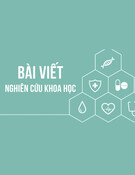

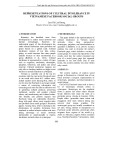
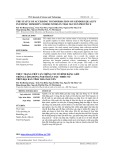

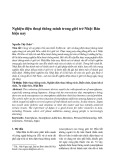
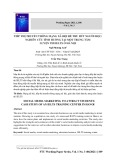
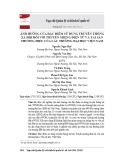
![Bộ quy tắc ứng xử về quấy rối tình dục tại nơi làm việc [Mới nhất]](https://cdn.tailieu.vn/images/document/thumbnail/2021/20210316/angicungduoc10/135x160/9711615879707.jpg)
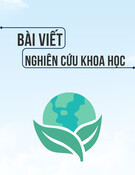
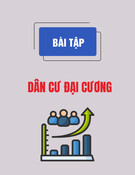
![Sổ tay Hướng dẫn truyền thông về lao động trẻ em [Mới nhất]](https://cdn.tailieu.vn/images/document/thumbnail/2025/20251114/kimphuong1001/135x160/7201763091001.jpg)
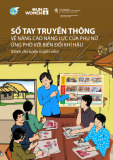
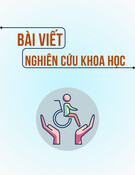
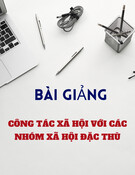

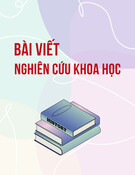
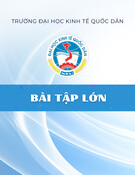

![Cẩm nang Thanh niên hành động [Mới nhất]](https://cdn.tailieu.vn/images/document/thumbnail/2025/20251017/kimphuong1001/135x160/1521760665202.jpg)
